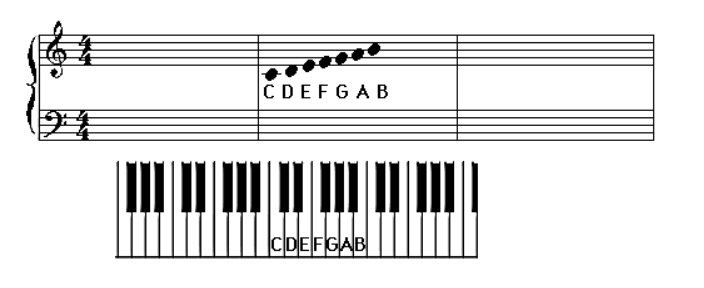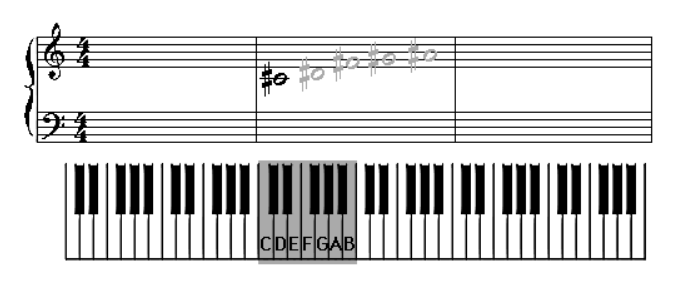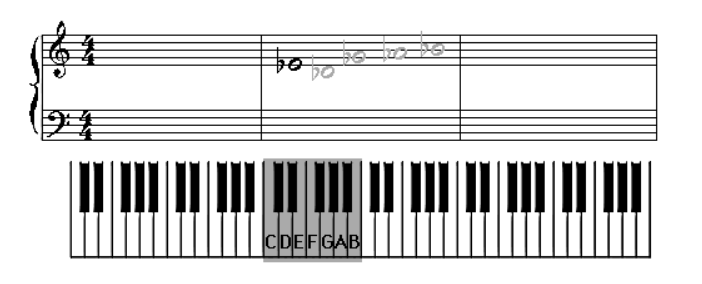

Lesson 2 - Section 1

Lesson 2 - Section 2

Learning About Sharps
Now that you have learned half steps you are ready to learn about Sharps.
Lesson 2 - Section 3

More About Sharps
Look at middle C on the staff. You’ll notice that it has a “#” sign next to it. This means that the composer wants you to play a note that is 1 half step up the keyboard from “C.”
Lesson 2 - Section 4

Learning About Flats
Now that you have learned Sharps you are ready to learn about Flats. This is the black note’s other name.
Lesson 2 - Section 5

More About Flats
Look at “E” above middle C on the staff above. You’ll notice that it has a “b” sign next to it. This means that the composer wants you to play a note that is 1 half step down the keyboard from “E.”